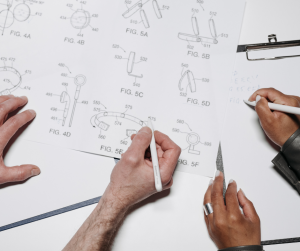 Engineers are often seen as technical problem-solvers calculating loads, drawing site plans, reviewing soil reports, and interpreting code. But at McNeil Engineering, we believe there’s another side to what we do. Engineering is a kind of language.
Engineers are often seen as technical problem-solvers calculating loads, drawing site plans, reviewing soil reports, and interpreting code. But at McNeil Engineering, we believe there’s another side to what we do. Engineering is a kind of language.
Every day, we’re translating complex challenges into practical solutions. We take ideas that begin as conversations, site visits, or sketches and turn them into physical environments that serve people and communities. Whether it’s a new building, a redesigned landscape, or a modernized stormwater system, the job starts with listening and ends with building something that lasts.
From Vision to Structure
Clients don’t come to us with formulas, they come with needs. They want a space to gather, a facility that works, a road that flows better, or a building that stays standing no matter what nature throws at it. These ideas don’t arrive as blueprints. They arrive in fragments: goals, constraints, and visions.
The role of structural and civil engineers is to understand the language behind those needs. It means asking the right questions. What are you hoping this space will do? Who will use it? How long does it need to last? What will it have to withstand?
Once we understand the “why,” we begin designing the “how.”
Civil Design as Interpretation
Civil engineering is often about working with what’s already there. We’re reading the landscape—its contours, its challenges, its possibilities—and building a bridge between the site’s limitations and the project’s purpose.
Sometimes that means translating a vision into a stormwater plan that protects nearby buildings. Other times it’s rerouting pedestrian paths to make a campus safer and more welcoming. In every case, we’re interpreting both what the client is saying and what the land itself is telling us.
Good civil design doesn’t just check boxes. It creates harmony between vision, environment, and infrastructure.
Surveying the Hidden Details
Surveying is one of the most literal forms of translation in engineering. It converts the physical world into data we can analyze and build from. Small shifts in elevation or minor deviations in boundary lines can have a massive impact on how a site is developed.
Accurate surveying is often the foundation for everything else. It’s the first “translation” of the project, a process of transforming what we see into something measurable, predictable, and usable across every discipline involved.
Landscape Architecture as a Visual Story
Landscape architects are fluent in both design and ecology. Their work translates human needs—shade, comfort, movement—into spaces that also serve the land. They choose plants that thrive in Utah’s climate, grade slopes that manage runoff, and lay out paths that encourage walking instead of driving.
In this way, landscape design becomes a language of interaction. It influences how people move, rest, socialize, and connect with nature. The most successful designs are the ones where the message comes through clearly: you belong here.
Details That Matter
Translation isn’t always glamorous. It’s often in the details, such as aligning a roof drain with a stormwater system, planning for a maintenance vehicle to safely access a fire lane, and choosing paving materials that hold up under freeze-thaw cycles. These decisions don’t always make headlines, but they’re critical to success.
Each one is a moment where someone took the time to listen carefully and respond clearly. And that’s what good engineering is.
Bridging the Gap
At McNeil Engineering, we see every project as an opportunity to help people communicate better, between vision and site, between environment and infrastructure, between present needs and future possibilities.
If you’re ready to bring your next idea to life, we’d love to help translate it. Contact us today to learn more!
